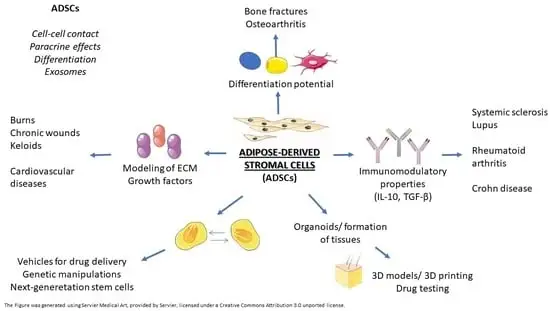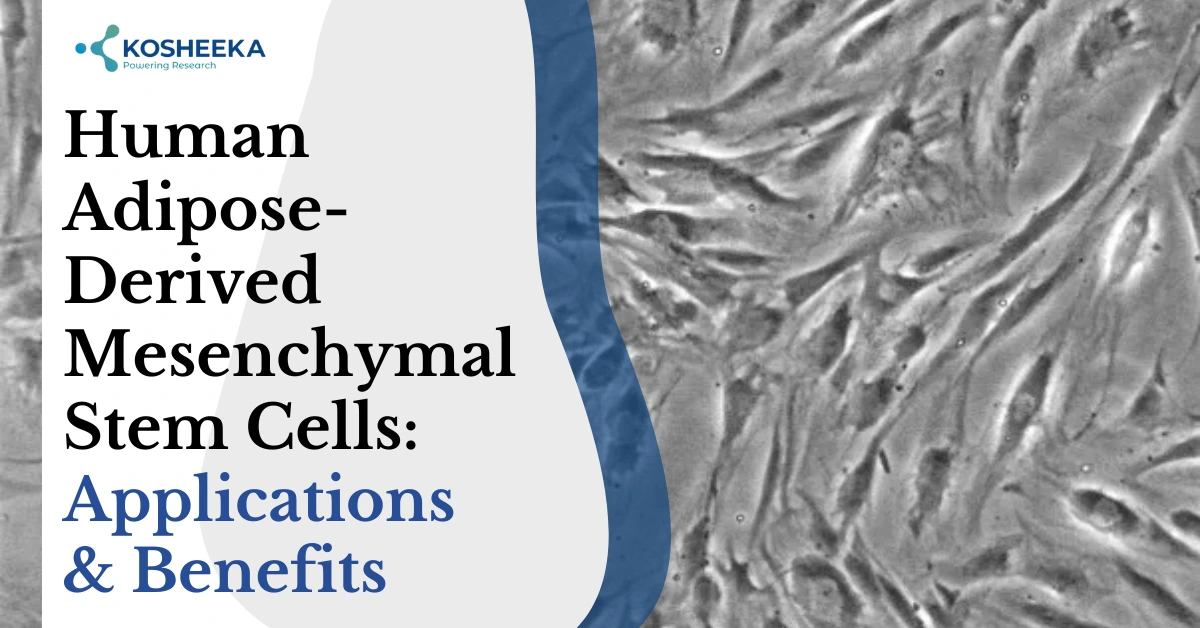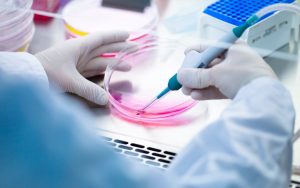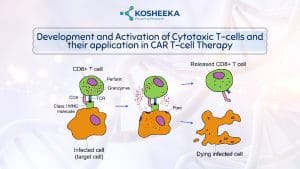Regenerative medicine has advanced remarkably over recent years, with one of the most promising areas of research being Human Adipose-Derived Mesenchymal Stem Cells (ADMSCs). These stem cells, isolated from human fat tissue, have the potential to repair, regenerate, and rejuvenate damaged tissues. Thus, these cells have attracted significant attention due to their abundance, easy accessibility, and broad therapeutic potential. Adipose-derived mesenchymal stem cells are becoming a cornerstone in tissue engineering, aesthetic medicine, and the management of chronic diseases.
What Are Human Adipose-Derived Mesenchymal Stem Cells?
Human Adipose-Derived Mesenchymal Stem Cells are multipotent cells found within adipose (fat) tissue. Like other mesenchymal stem cells (MSCs) derived from bone marrow or umbilical cord, these cells can differentiate into different cell types, including cartilage, muscle, bone, and fat cells. However, adipose tissue offers a particularly rich and accessible source of stem cells; furthermore, harvesting them is minimally invasive, typically involving liposuction or a fat biopsy, which provides a high number of viable cells.
These adipose-derived stem cells reside in the stromal vascular fraction (SVF) of fat tissue, which also contains blood cells, immune cells, and other supporting components. When isolated and cultured, these cells possess high regenerative, immunomodulatory, and anti-inflammatory properties. These attributes present them as a promising resource in the realm of therapeutic applications.
Advantages of Using Adipose-Derived Mesenchymal Stem Cells
Abundance and Ease of Collection:
Adipose tissue is far more plentiful than bone marrow, and harvesting fat is a relatively simple outpatient procedure. Moreover, a small amount of adipose tissue can provide millions of human adipose stem cells, enabling multiple applications from a single extraction.
High Proliferative Capacity:
These cells possess a high rate of proliferation and differentiation, giving researchers an opportunity to apply them in other therapies.
Fewer Ethical Concerns:
Unlike the embryonic stem cells, adipose-derived stem cells are obtained from adult tissue and therefore ethical issues of embryonic sources do not arise.
Low Risk of Immune Rejection:
The use of autologous adipose-derived mesenchymal stem cells would reduce immune issues and complement the safety and efficacy of the stem cells in clinical use.
Robust Immunomodulatory Capacity:
These stem cells produce cytokines and growth factors which are able to regulate immune responses, decrease inflammation, and aid in healing damaged tissues.
Mechanisms of Action:
The human adipose-mesenchymal stem cells aid in tissue repair and regeneration by a variety of mechanisms:
- Differentiation: They are capable of differentiation into each of the specialized cells: osteocytes (bone cells), chondrocytes (cartilage cells), and adipocytes (fat cells).
- Paracrine signaling: They secrete bioactive molecules that trigger local cells to regenerate and repair tissue.
- Immunomodulation: They modulate immune activity, suppressing excessive inflammation while supporting tissue healing.
- Angiogenesis: They stimulate the development of new blood vessels to enhance oxygen and nutrition to disaster areas.
Thus, through these combined actions, adipose-derived stem cells create a supportive microenvironment that accelerates natural healing and tissue regeneration.
Applications of Human Adipose-Derived Mesenchymal Stem Cells
Human Adipose-Derived Mesenchymal Stem Cells have a therapeutic role that spans a wide variety of medical and cosmetic applications. Furthermore, their lack of cytotoxicity and immunoregulatory functions renders them applicable in the treatment of various diseases and conditions.
Orthopedic and Musculoskeletal Disorders:
Human adipose-derived mesenchymal stem cells have been widely studied for the repair of bone/cartilage damage. They are also used in such diseases as osteoarthritis, tendon injuries, and bone fractures. These stem cells contribute to reducing inflammation of the joints and further cartilage growth. These cells also increase mobility and pain treatment in patients with degenerative musculoskeletal diseases.
Healing of Wounds and Skin Regeneration:
Adipose-derived stem cells possess great potential, as they can promote the process of angiogenesis and collagen synthesis. These properties of adipose-derived stem cells have therefore proven to be very effective in healing wounds, particularly in chronic ulcers, burns, and surgical wounds. As a result, fat grafting and skin rejuvenation treatments use these cells in aesthetic medicine. These treatments encourage natural tissue regeneration while improving the elasticity and texture of the skin.
Cardiovascular Applications:
Studies suggest that human adipose-derived mesenchymal stem cells can be used to repair an ischemic heart after a heart attack (myocardial infarction). They facilitate angiogenesis and produce growth factors that potentially protect cardiac cells, minimize scarring, and improve the heart’s functions.
Neurological Disorders:
Neurodegenerative conditions like Alzheimer’s, multiple sclerosis, and Parkinson’s may also benefit from therapies involving adipose-derived mesenchymal stem cells. These cells have the capacity to reduce neuroinflammation and improve neuroprotection. Furthermore, human adipose-derived mesenchymal stem cells support nerve cell regeneration and survival in damaged regions of the brain and the spinal cord.
Autoimmune and Inflammatory Diseases:
Adipose-derived stem cells have immunomodulatory effects, which enable them to be used in the treatment of autoimmune conditions like lupus, rheumatoid arthritis, and Crohn’s disease. These cells can compensate for the immune responses and decrease the level of pro-inflammatory cytokines, decrease the symptoms, and decrease the disease progression.
Aesthetic and Anti-Aging Treatments:
Human adipose stem cells are commonly used in cosmetic and anti-aging medicine for skin renewal, better facial volume, and the tone of the skin. Stem cell-enriched fat grafting has become a popular technique to achieve long-lasting, natural-looking aesthetic results. The regenerative factors secreted by these cells also support collagen production and aid in repairing photoaged skin.
Endocrine and Metabolic Disorders:
Recent research holds promise of beneficial effects of Adipose-Derived Mesenchymal Stem Cells in the management of metabolic diseases like diabetes, and those associated with obesity. These cells can potentially be used to reestablish insulin sensitivity, induce beta-cell regeneration in the pancreas, and decrease systemic insulin-regulating inflammation, which is part of metabolic syndrome.

Adipose-Derived Mesenchymal Stromal Cells in Basic Research and Clinical Applications. Open access from the Creative Commons Attribution (CC BY) license (https://creativecommons.org/licenses/by/4.0/). Source: Czerwiec K, Zawrzykraj M, Deptuła M, Skoniecka A, Tymińska A, Zieliński J, Kosiński A, Pikuła M. Adipose-Derived Mesenchymal Stromal Cells in Basic Research and Clinical Applications. International Journal of Molecular Sciences. 2023; 24(4):3888. https://doi.org/10.3390/ijms24043888
Benefits of Human Adipose-Derived Mesenchymal Stem Cells
The clinical and research evidence supporting human adipose-derived mesenchymal stem cells continues to grow. Some of the major benefits include:
- They help in efficiently repairing damaged or aged tissues.
- Highly suitable for managing chronic autoimmune and inflammatory conditions.
- They accelerated wound healing post-surgery or after injuries.
- Promotes youthful and overall rejuvenated skin, and anti-aging.
- They can be conveniently harvested through minimally invasive methods from small amounts of fat tissue.
- Human adipose-derived mesenchymal stem cells are present in higher amounts in fat tissue than in bone marrow.
- They have the potential to be applied for personalized therapy, thereby minimizing ethical and immunological issues.
Future Prospects
The potential of adipose-derived mesenchymal stem cells in regenerative medicine is vast. Their application in organ regeneration, reversal of fibrosis, and even cancer treatment is under clinical trials. Cell culture, biomaterials, and gene editing advances are likely to further improve their therapeutic potential and safety profiles.
With the improvement of regulatory systems and a greater number of clinical outcomes in the long run, human adipose stem cells will become an essential element of individual regenerative therapies.
Product-Related Queries, Or Partnership Inquiries
Conclusion
Human adipose-derived mesenchymal stem cells represent a powerful, versatile, and accessible resource for modern regenerative medicine. They are highly useful in various fields of medicine as well as cosmetics due to their capacity to heal wounds, regulate body immunity, and revitalize organs of old age. These Adipose-Derived Stem Cells have the potential to transform the way we treat illness, aging, and disease management.
FAQ’s
Q-What defines Human Adipose-Derived Mesenchymal Stem Cells, and how are they harvested?
Human adipose-derived mesenchymal stem cells are multipotent stromal cells isolated from adipose tissue via minimally invasive procedures such as lipoaspiration. These cells exhibit self-renewal, multilineage differentiation, and high yield, making them an abundant and accessible source for regenerative medicine and tissue-engineering applications.
Q-In which clinical and experimental contexts are adipose-derived stem cells currently applied?
Human adipose-derived stem cells are used in studies on orthopaedics, wound healing, cardiovascular repair, neurology, autoimmune disease, and cosmetic medicine. Their regenerative and immunomodulatory potential supports their value in translational research and advanced cell-based therapy development.
Q-What is the primary goal of human adipose-derived stem cell purification?
The main objective of adipose-derived mesenchymal stem cell purification is to selectively isolate stem cells from adipose tissue while removing mature adipocytes, blood cells, and endothelial cells.
Q-What differentiation potential do purified human adipose-derived stem cells exhibit?
Purified hADSCs are multipotent and can differentiate into adipocytes, chondrocytes, and osteoblasts. Recent studies have shown their ability to transdifferentiate into non-mesodermal lineages, like neural cells and cardiomyocytes.



